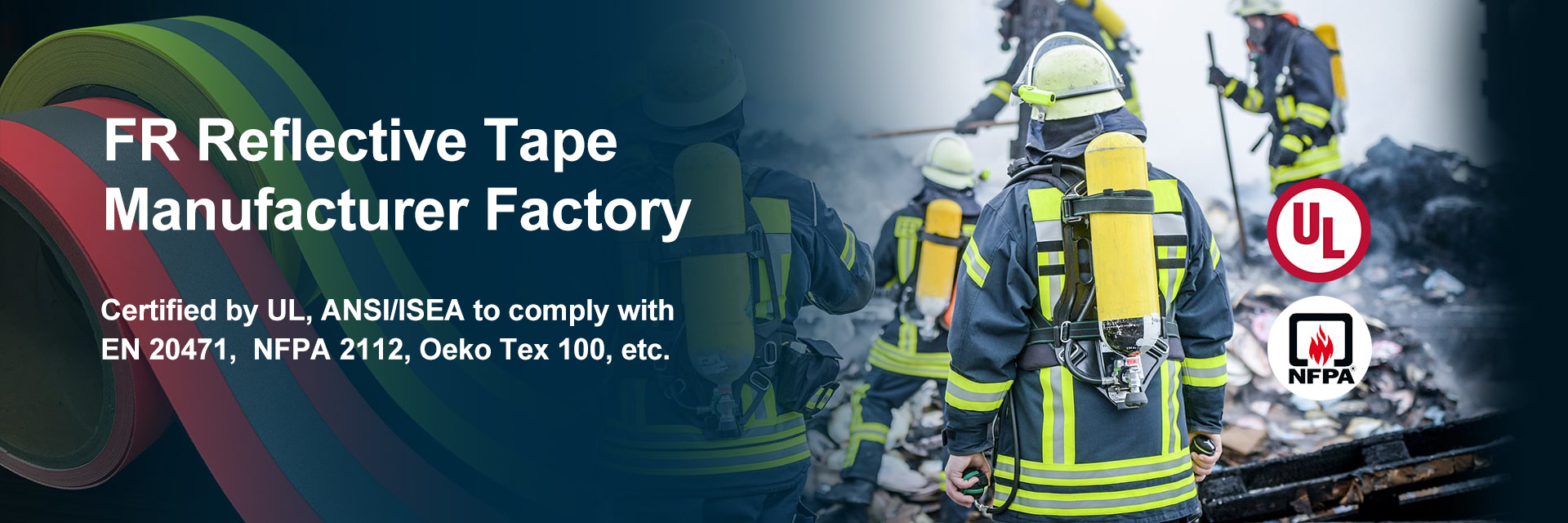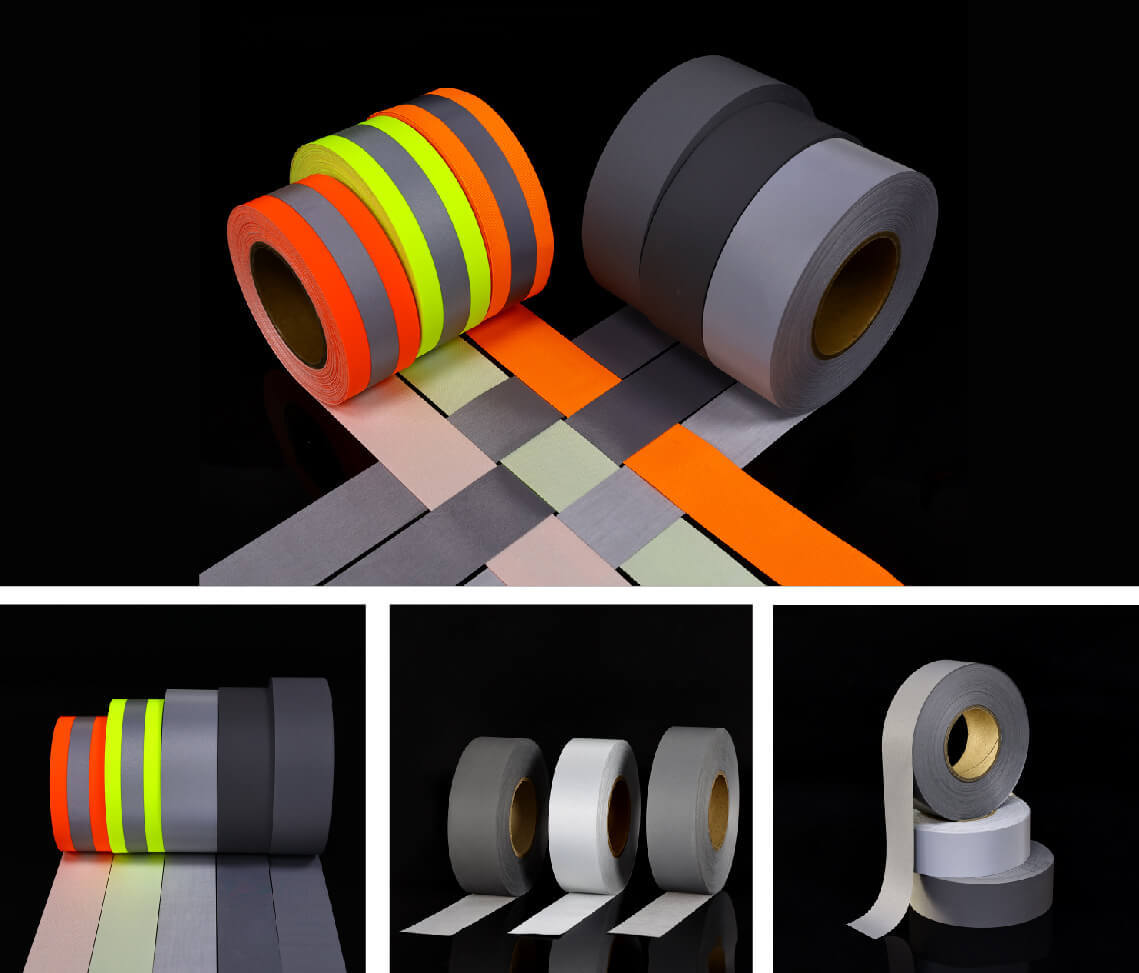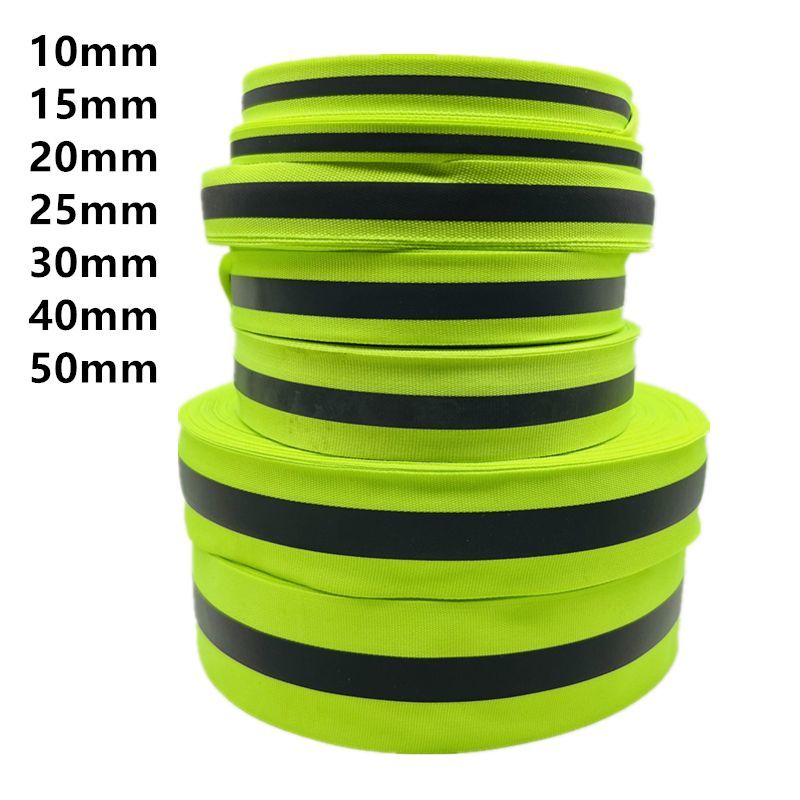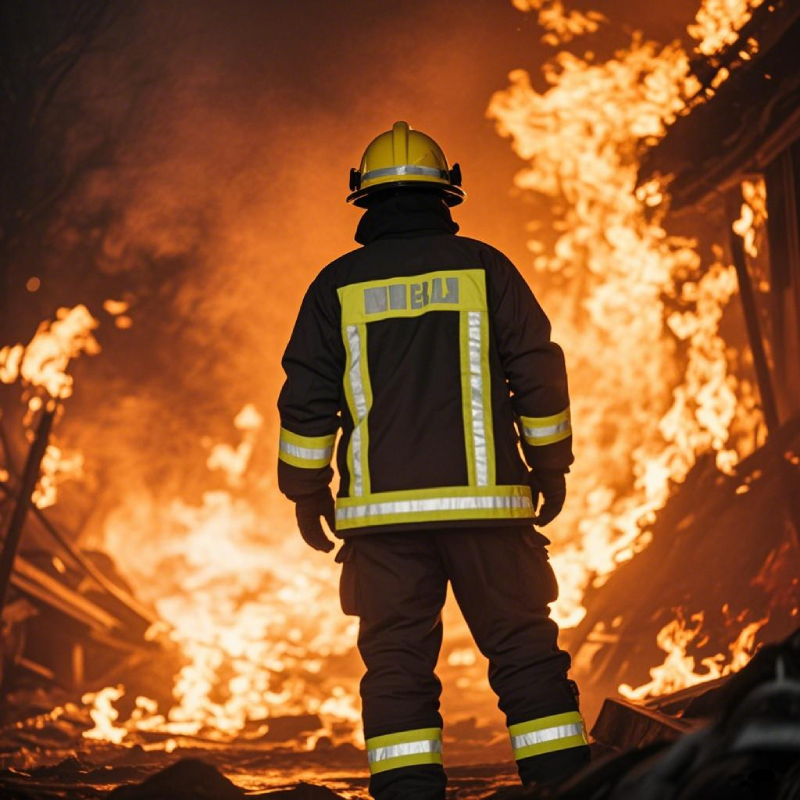How Does High Quality FR Reflective Tape Achieve Flame Retardant Effect
2025-05-08
Ysmlite
ysmlite.com
Basic principles of flame retardant reflective tape: dual physical and chemical flame retardant mechanisms
- Physical flame retardant mechanism
Under high temperature or flame, high-quality flame retardant reflective tape first relies on the carbonization accelerator in its formula to quickly form a dense carbonized protective film on the surface of the tape. This carbonized layer can effectively isolate the internal substrate from external oxygen and heat sources, significantly reducing the burning rate and heat conduction efficiency of the tape. The carbonization process usually starts between 300–400 ℃, and as the temperature rises, the thickness of the protective film continues to increase, further enhancing the thermal insulation effect. For high-risk scenarios such as petrochemical plants and tunnel walls, this physical barrier can buy precious time for escape and fire extinguishing.
- Chemical flame retardant mechanism
Phosphorus- or nitrogen-containing chemical flame retardants, such as ammonium tripolyphosphate (APP), aluminum hydroxide (ATH) or magnesium hydroxide (MDH), are often added to high-efficiency flame retardant formulas. In the early stages of combustion, these chemical flame retardants are decomposed by heat, releasing inert gases (such as ammonia and carbon dioxide) or generating phosphorus oxygen free radicals that have the ability to inhibit free radical chain reactions. Inert gases dilute combustible products and reduce the oxygen concentration in the combustion environment; while phosphorus oxygen free radicals combine with active groups in the combustion chain to interrupt the combustion chain reaction. The combination of the two can not only reduce the flame temperature, but also directly inhibit the combustion of materials.
- Synergistic effect
When the physical and chemical flame retardant mechanisms work together, the flame retardant properties of flame-retardant reflective tape can show a synergistic effect of "1 + 1>2". For example, after the reflective layer is embedded in the micro-prismatic structure, the flame propagation path is artificially extended; at the same time, the chemical flame retardant releases gas inside the prism gap to form a local flame suppression environment. According to tests by many domestic and foreign laboratories, the vertical burning self-extinguishing time of tapes using this type of dual flame retardant technology can be shortened to less than 2-5 seconds, far exceeding the performance of a single flame retardant method.
Selection and application standards of high-quality flame retardant materials
- Selection of flame retardant substrates
For lining materials, it is recommended to use aramid/cotton blended fabrics certified by UL94 V0, which have the flexibility of natural fibers and heat resistance of more than 500 ℃ due to the aramid polymer chain structure. In high temperature environments, aramid fibers do not produce toxic smoke, ensuring personnel safety. FR-Cotton products on the market still maintain a breaking strength of ≥ 95% after 200 washing cycles at 60 ℃, making them ideal for industrial-grade applications.
- Reflective layer material requirements
High-quality reflective layers can be made of glass microbead reflective film or microprismatic engineering plastic film. Microbead reflective technology relies on the principle of spherical refraction to efficiently scatter incident light; while the microprismatic structure focuses more on directional reflection of incident light. Both can achieve a brightness of ≥ 350 cd/(lx·m²) under different light sources and angles. Good heat resistance is the key - high-quality reflective film should not peel, bubble or stick during the hot pressing and laminating process at 150–180 ℃.
- Industry standard comparison
EN ISO 20471 (high-visibility clothing standard): reflective performance ≥ 0.2 m², color fastness grade ≥ 4.
NFPA 2112 (petrochemical workwear flame retardant standard): fabric self-extinguishing time ≤ 2 seconds, no dripping.
ANSI/ISEA 107 (American Standard High Visibility Clothing): Reflective strip width ≥ 50 mm, total reflective area ≥ 0.2 m².
ASTM D6413 (Vertical Burning Test for Textiles): Drops do not ignite the cotton layer.
- Professional testing tools and methods
Thermogravimetric analysis (TGA): Used to determine the weight loss curve and carbonization residual rate of materials at different temperatures, with excellent performance when the residual rate is ≥ 30%.
Differential scanning calorimetry (DSC): Accurately record the phase change and decomposition temperature of the material at a heating rate of 10 ℃/min to ensure the safety margin of the formula.
Portable reflective brightness meter: Quickly measure the reflective brightness of the reflective strip in a 0.2 lx environment on site, which is convenient for daily maintenance and testing.

Key steps in the production process of flame-retardant reflective tape
- Raw material pretreatment
To remove residual moisture in the fiber and reflective film, the textile substrate and reflective film are first dried at 80–100 ℃ for 2–4 hours. The ideal moisture content is controlled below 2% to avoid bubbles and stratification due to water volatilization during the compounding process. For formulations with added nanofillers, pretreatment in an inert atmosphere (nitrogen) is required to ensure uniform dispersion of nanoparticles.
- Flame-retardant coating preparation
The main agent ammonium tripolyphosphate (APP), the auxiliary agent aluminum hydroxide (ATH) and the carbon source polyether polyol are accurately weighed according to the ratio (APP 40 wt%, ATH 15 wt%, carbon source 5 wt%), and the solubilizer polyethylene glycol (PEG) and silane coupling agent are added. Premix in a high-speed disperser at 2 000 rpm for 5 minutes, and then grind in a bead mill to an average particle size of ≤ 1 μm.
- Scraper/roller coating process
Use a precision scraper or double-roller coater for coating, and the dry film thickness of the coating is controlled at 50–150 g/m². After coating, it needs to be left at 80–100 ℃ for 5–10 minutes for preliminary curing to prevent lateral flow during hot pressing and causing uneven thickness.
- Hot pressing lamination
The pre-treated fabric and reflective film are laminated in a hot press at a temperature of 150–180 ℃ and a pressure of 0.5–1 MPa for 5–10 minutes. At this time, the overall tension is monitored by an online tensile sensor to ensure that the tape is flat and wrinkle-free, and an online camera is used to detect whether there are bubbles and defects on the surface.
- Post-processing and shaping
The laminated tape is shaped by cooling rollers and subjected to a multi-cycle water washing peeling test (25 times of 60 ℃ water washing) to ensure that there is no delamination and no warping. Finally, after standing for 24 hours in a 23 ℃/50% RH environment, the breaking strength and reflective brightness were measured to ensure the consistency of the factory batches.
Recommended formulas and additives for achieving efficient flame retardant effects
- Main agent: ammonium tripolyphosphate (APP)
Ignition inhibition: decomposes at 270–300 ℃ to form a polyphosphoric acid layer to promote carbonization.
Optimum addition amount: 30–50 wt%, a small amount is easy to sag, and a large amount affects the physical properties.
- Auxiliary agents: aluminum hydroxide (ATH) and magnesium hydroxide (MDH)
- Endothermic decomposition: ATH decomposes and releases heat at 200–220 ℃, and MDH decomposes and releases water vapor at 300–330 ℃.
- Recommended amount ratio: ATH 10–15 wt%, MDH 5–10 wt%, taking into account the flame retardant requirements at the initial and high temperature stages.
- Carbon source: polyether polyol or polysaccharide
- Promote carbon layer: Under the action of chemical flame retardant, a denser carbonized layer is formed.
- Ratio recommendation: 5-8 wt% carbon source, excessive amount may cause the coating to be hard and brittle.
- Nanofiller: montmorillonite (MMT), nano alumina
- Toughening and barrier: The nanosheet structure can form a "brick wall buffer" in the carbonized layer to improve the mechanical strength.
- Usage: 1-3 wt%, pay attention to uniform dispersion.
- Dispersing and film-forming aids
- Polyethylene glycol (PEG) and silane coupling agent: Improve the compatibility of additives with the resin matrix.
- Operation skills: Pre-disperse by wet method first, then adjust the viscosity by dry method to ensure no blockage during coating.

Flame retardant performance test and international certification standards
- UL94 vertical burning test
- Standard overview: Hang the sample vertically, and the flame will extinguish after 10 seconds. The self-extinguishing time is required to be ≤ 10 seconds and there is no dripping to ignite the cotton layer.
- Tips: It is recommended to conduct sampling tests on the final product profile to eliminate performance fluctuations caused by composite thickness or structural differences.
- ASTM D6413 45° tilt test
- Method description: The sample is burned at a 45° tilt angle to determine the burning rate. The qualified standard is ≤ 2.2 in/min.
- Recommendation: Use an infrared thermometer to record the peak temperature during the combustion process to verify the decomposition temperature and heat absorption time of the chemical flame retardant.
- NFPA 701 Small Sample Flame Test
- Application range: curtains, textile decorative materials, etc. After the flame is applied, the sample must self-extinguish within the specified time and there must be no dripping.
- Key points: The tape is tested on a variety of substrates (cloth, plastic, metal) to ensure applicability in multiple scenarios.
- ISO 6941 flying fire test
- Comprehensive evaluation: Determine the number and size of flying fire particles under the action of a specified combustion source flame to evaluate the thermal insulation and fire retardant properties.
- Operation tips: The flying fire test helps to evaluate the integrity of the carbonized layer and the impact of tiny cracks on the flame retardant effect.
- Periodic retesting and quality traceability
- Recommended frequency: A full set of tests are carried out after each batch of production is completed, and retested every six months.
- Data management: The test report and raw material batch number are recorded through the ERP system to achieve full process traceability and provide customers with authoritative reports.
Practical application skills: Ensure the flame retardant effect of installation and maintenance
Cutting and splicing points
- Overlap allowance: Leave ≥ 10 mm allowance at each splicing section, and use overlapping stitching to avoid edge cracking.
- Trimming treatment: After trimming, the edges are sealed in time, and a high-temperature flame retardant hot cutting machine can be used to seal to prevent loose fibers from causing performance degradation.
Pasting and sewing methods
- High-temperature flame retardant adhesive: Select a special adhesive with an operating temperature of ≥ 150 ℃ and an aging resistance level of ≥ 3.
- Flame retardant stitching: Use Nomex or aramid stitching with a seam distance of ≤ 5 mm to ensure that the strength of the seam is not inferior to that of the substrate.
Environmental adaptation and protection
- Avoid direct sunlight: Long-term ultraviolet radiation will accelerate the aging of resins and flame retardants.
- Sunshade measures should be added when used outdoors.
- Chemical corrosion resistance: In acid rain or chemical vapor environments, clean regularly with neutral detergent and apply protective coating.
Daily cleaning and maintenance
- Cleaning temperature: No more than 60 ℃, hand washing or weak water machine washing is recommended.
- Bleach is prohibited: Any chlorine-containing bleach will decompose the micro-prismatic structure of the reflective layer.
- Maintenance cycle: After every 3 months of use or 10 cleanings, use a portable reflective brightness meter to detect the reflective intensity to ensure ≥ 90% of the initial brightness.
On-site rapid detection
- Portable thermal imager: It can detect the formation of the carbonized layer before the fire source approaches and evaluate the physical flame retardant effect.
- Reflective brightness meter: measures real-time reflective data in a 0.2 lx environment to ensure high visibility at night.

FAQ: Misconceptions about the use of flame-retardant reflective tape
Misconception: All reflective tapes are flame-retardant
In fact, ordinary reflective tapes on the market that have not been specially formulated and tested only have reflective effects and almost no flame retardant properties. When purchasing, be sure to check the product's UL94, NFPA or EN ISO certification reports to ensure that its flame retardant mechanism and performance data are traceable.
Misconception: Flame retardant and reflective effects cannot be achieved at the same time
High-quality manufacturers have achieved efficient synergy between reflective microprisms and flame retardant coatings through fine formulations and microstructure design. Glass microbeads and nano flame retardants can work together on the same substrate, ensuring that the brightness is not less than 350 cd/(lx·m²) and the self-extinguishing time in the ASTM D6413 test is ≤ 2 seconds.
Myth: As long as the coating is thick, it is flame retardant.
Too thick flame retardant coatings are prone to cracking and delamination during hot pressing or use, which will damage the overall performance of the tape. The ideal dry film thickness should be controlled at 50–150 g/m², and nano-toughening agents should be used to improve mechanical toughness.
Conclusion
Key points review
The excellent performance of high-quality fire retardant reflective tape comes from the synergistic effect of physical and chemical dual flame retardant mechanisms, strict material selection and production processes, precise formula design, and comprehensive international testing and certification. Only by being professional and meticulous in every link can it truly play a role in protecting lives in high-risk environments.
Industry technology trends
Bio-based flame retardants: Develop environmentally friendly formulas based on phosphate-modified cellulose, which are also degradable.
Intelligent nanostructures: Embed intelligent phase change materials inside reflective microprisms to achieve instant flame retardancy when exposed to heat.
3D printing composites: In the future, more complex reflective and flame retardant structures may be achieved through multi-material integrated 3D printing.
Advice for buyers and engineers
When purchasing, be sure to request a complete test report and third-party certification; have a deep understanding of the supplier's production process and quality management system; regularly conduct field tests on products in use to ensure that the flame retardant and reflective properties do not decay over time.
Call for action
In key areas such as fire protection, petrochemicals, transportation, and safety clothing, please immediately upgrade to high-quality flame retardant reflective tapes to add another reliable line of defense for the safety of personnel and property. Choose Ysmlite, choose professionalism and peace of mind.
Related News
Top 5 Reflective Webbing Tape Manufacturers in the World
2025-06-06
Top 5 Flame Retardant Reflective Tape Manufacturers in the Industry
2025-06-05
Do You Know the Service Life of Reflective Webbing Tape?
2025-05-27





